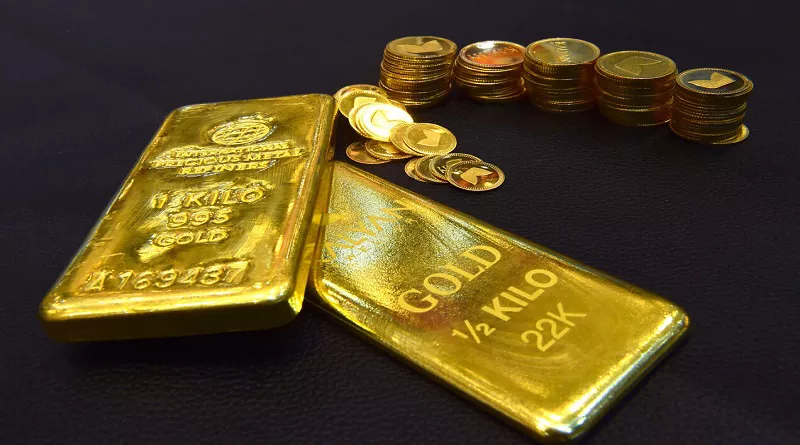Gold has long been regarded as a valuable asset, serving as a hedge against inflation and economic instability. Understanding historical gold prices can provide insights into market trends, investment strategies, and the economic climate of a given period. This article delves into the price of gold in 1984, exploring the factors influencing its value, its implications for investors, and the broader economic context of that year.
In 1984, gold prices experienced notable fluctuations, reflecting various economic and geopolitical factors. This year marked a transitional period in the global economy, characterized by significant events that impacted commodity prices. By examining the price of gold during this time, we can gain valuable insights into the economic conditions and market sentiments that prevailed.
The Economic Context of 1984
1. Global Economic Overview
The early 1980s were marked by economic turbulence, with many countries grappling with high inflation rates, rising interest rates, and sluggish growth. In the United States, the Federal Reserve’s policies aimed at combating inflation had profound effects on various asset classes, including gold.
2. Inflation and Interest Rates
In the years leading up to 1984, the U.S. experienced a battle against inflation. The Federal Reserve, led by Chairman Paul Volcker, implemented tight monetary policies to curb rising prices.
High Inflation: Inflation rates peaked in the early 1980s, leading many investors to seek refuge in gold as a safe-haven asset.
Interest Rates: The Federal Reserve raised interest rates significantly, which had a dual effect on gold prices—higher interest rates typically strengthen the dollar, making gold more expensive for foreign buyers, but they also drive investors toward gold to protect against inflation.
3. Geopolitical Events
Several geopolitical events in the early 1980s influenced the gold market:
Cold War Tensions: Ongoing geopolitical tensions between the U.S. and the Soviet Union created uncertainty, often leading to increased demand for gold as a stable investment.
Middle East Conflicts: The Iran-Iraq War, which began in 1980, contributed to volatility in oil prices and broader economic uncertainty, further driving interest in gold.
Gold Price Trends in 1984
1. Yearly Average Prices
In 1984, the average price of gold fluctuated throughout the year. The annual average price was approximately $360 per ounce.
January: The year started with gold prices around $380 per ounce, reflecting strong investor demand.
Mid-Year Trends: Prices dipped to around $320 per ounce by mid-1984 due to a strengthening dollar and falling inflation expectations.
Year-End: By December 1984, gold prices stabilized around $350 per ounce, influenced by various market factors.
2. Monthly Price Fluctuations
Analyzing the monthly price changes provides deeper insights into market behavior throughout 1984:
January: Prices peaked early in the month at $392 per ounce before beginning a downward trend.
February: Prices began to decline, averaging $370 per ounce.
March to May: Continued decline brought prices down to the $340-$350 range.
June: Prices touched a low of $320 per ounce.
July to December: Prices began to recover, averaging around $350 by year-end.
3. Comparison to Previous Years
The price of gold in 1984 can be contextualized by comparing it to previous years:
1980: Gold reached its highest prices ever at that time, averaging about $615 per ounce due to the economic crises and inflationary pressures.
1983: Prices had decreased to around $430 per ounce, indicating a recovering economy and reduced inflationary concerns.
Factors Influencing Gold Prices in 1984
1. Economic Policies
Federal Reserve Policies: The tight monetary policies implemented by the Federal Reserve to combat inflation played a significant role in determining gold prices. As interest rates rose, the opportunity cost of holding non-yielding assets like gold increased.
2. Supply and Demand Dynamics
Mining Production: The global supply of gold remained stable, with mining production contributing to available market supplies.
Jewelry Demand: Jewelry demand, particularly from countries like India and China, played a role in stabilizing prices.
3. Market Sentiment
Investor sentiment regarding inflation, economic stability, and geopolitical risks influenced gold’s appeal:
Safe Haven Asset: In times of uncertainty, investors often flock to gold as a safe haven, providing upward pressure on prices during periods of geopolitical tension.
Investment Implications of Gold Prices in 1984
1. Investment Strategies
The price of gold in 1984 influenced various investment strategies:
Hedging Against Inflation: Many investors viewed gold as a hedge against inflation, leading to increased demand during times of economic uncertainty.
Diversification: Gold was often incorporated into diversified portfolios, allowing investors to balance their exposure to equities and bonds.
2. Long-Term Trends
The trends observed in 1984 set the stage for future gold prices:
1985 and Beyond: Following 1984, gold prices experienced a significant increase, reaching around $500 per ounce by 1987 as economic conditions fluctuated.
Conclusion
The price of gold in 1984 was influenced by a confluence of economic, geopolitical, and market factors. Averaging around $360 per ounce, gold reflected the complex dynamics of the global economy during this period. Understanding these historical prices and the factors that shaped them provides valuable insights for investors and economists alike.
As we analyze the fluctuations of gold prices throughout the years, it becomes clear that this precious metal continues to play a critical role in the global financial landscape. Investors looking to gold for stability and growth will find that understanding its history is essential for making informed decisions in the present and future.
Related topics:
- The Price of Gold in 1983: A Historical Overview
- The Price of Gold in 1982: A Historical Perspective
- The Price of Gold in 1981: A Historical Perspective


